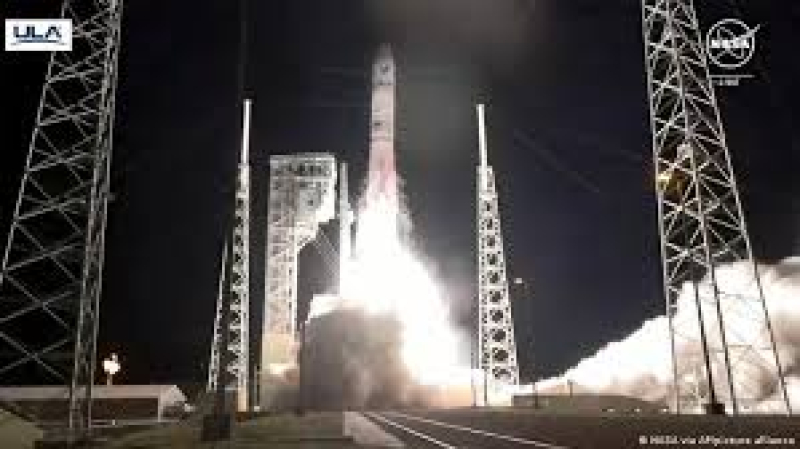- 2025: Resilient Economies, Smart Development, and More Jobs |
- Dhaka rejects India's statement on incident at BD HC residence, New Delhi |
- Stocks end lower; trading falls at DSE, improves at CSE |
- No need to be kind to election disruptors: EC to law enforcers |
- No Media Faced Arson Attacks in 53 Years: Mahfuz Anam |
Critical fuel loss derails US first moon landing in 50 years

The first US-based spacecraft to attempt a moon landing in more than half a century faced near-certain failure merely hours after it blasted off.
The "Vulcan" rocket, built by Boeing and Lockheed Martin's "United Launch Alliance" (ULA), lifted off from the space station at 2:18 a.m. (718 GMT) from the Cape Canaveral Space Force Station in Florida.
On board the rocket is Astrobotic Technology's lunar lander, "Peregrine."
The Pittsburgh-based private space robotics firm aimed to be the first private company to land a craft on the moon, before reports of a "critical loss" of fuel suggested the mission was doomed to fail.
What derailed the historic takeoff?
Hours after takeoff, Astrobotic began reporting technical troubles. It first said it was unable to orient the lander's top-mounted solar panel toward the Sun in order to maintain charge on its onboard battery.
This was due to a malfunction in its propulsion system. Engineers "improvised" a way to tilt "Peregrine" in the right direction, succeeding in maintaining its power.
However, the company then announced that the same propulsion failure appeared to be the cause of a "critical loss of propellant."
"We are currently assessing what alternative mission profiles may be feasible at this time," Astrobotic said. The statement was interpreted as an admission that the Peregrine would not achieve a controlled touchdown on the Moon as planned.
A propulsion system problem "threatens the ability of the spacecraft to soft land on the moon," the company said. The lander is equipped with engines and thrusters for maneuvering, not only during the cruise to the moon but for lunar descent.
NASA also addressed the challanges faced by the moon mission.
"Each mission is an opportunity to learn. We're proud to work with our partners to advance exploration of the Moon," the US national space agency said on social media.
What we know about the mission
Some 30 minutes into liftoff, ULA said on social media that the flight was stable as it orbited around the Earth in the first part of the journey.
"Half-way through this coast period, Centaur systems remain stable as it coasts in Earth orbit, headed to a precise point in space above the Indian Ocean where the second engine firing is planned."
The flight was scheduled to touchdown on February 23. The Peregrine lunar lander's anticipated mission was meant to gather data about the lunar surface ahead of planned future human missions.
Peregrine would have marked the first US soft landing on the moon since the final Apollo landing in 1972.

